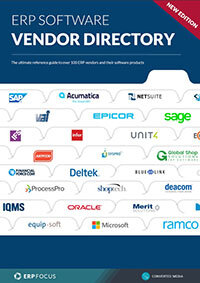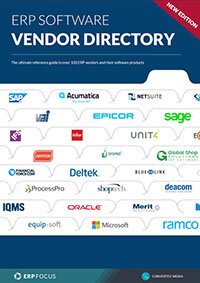Replacing Your ERP System…More or Less?
If you have swallowed deeply a couple of times and decided the right answer for you and your organization is to replace your current ERP package with another vendor’s system, will your requirements list be bigger, smaller, or about the same as your currently have? Ignore the part about why you are changing ERP systems – we are just assuming the new system has more or better functionality in a few critical areas that you need, and that you will use more of that. But on the rest of the system, will you be tempted to expand into areas you were afraid to go after the first time around? Conversely, will you try to pull back the scope of your original ERP implementation, judging that some functionality requires too much care and feeding relative to the benefits derived?
Going after more is not for the faint of heart, since even a quid pro quo replacement will be very difficult work. However, after this amount of maturity with your ERP package, you know where the pain points are, and especially, the gaps. If you have lived in a permanent state of evaluating CRM or advanced supply chain functionality or better SG&A analysis ever since your first successful ERP go live, taking on this additional scope might push your replacement ERP project from being an improvement in the eyes of users, to hitting a home run in the eyes of users.
An Opportunity to Optimize and Simplify
On the opposite end of the spectrum, perhaps your users recognize that the road to hell is paved with good intentions, and they had no concept of the what work load was needed in order to deliver the amount of control they requested. Maybe they don’t need quite so much granularity in their ERP quality management system, or maybe they can manage plant maintenance just fine on a spreadsheet. Maybe advances in lean manufacturing will allow you to bypass many control points that were considered essential ten years ago. This is a very opportune time for streamlining, because often, you cannot get thoughtful analysis out of business leadership during blueprint, and the default position is to overpopulate your requirements list, just in case you might need it someday.
The story is often told about the architect who designed a series of buildings for an area on a college campus. He came back to the campus a year after the buildings were completed to observe where footpaths had worn away the grass. With that knowledge, he then designed the walkways and connectors over top of those footpaths. One of the benefits of replacing an ERP system is that it’s an opportunity to see where the footpaths are in your business.
Download the Industry's Most Comprehensive Guide to ERP Software Vendors
Free white paper

ERP Software Vendor Directory
Put the most comprehensive ERP vendor directory on your desk today

Related articles
-

Wrestling with Your ERP System? These Five Questions Can Stop the Fight
Jeff Carr, Principal at Ultra Consultants, outlines key questions which need to be asked about yo...
-

CMMC Compliance: What Aerospace and Defense Manufacturers Need to Know
Key insights on CMMC compliance, deadlines, and securing DoD contracts with CMMC 2.0 certificatio...
-

ERP Change: The Secret For Merger Success
The combination of two or more companies creates friction in all aspects of business, not least t...

